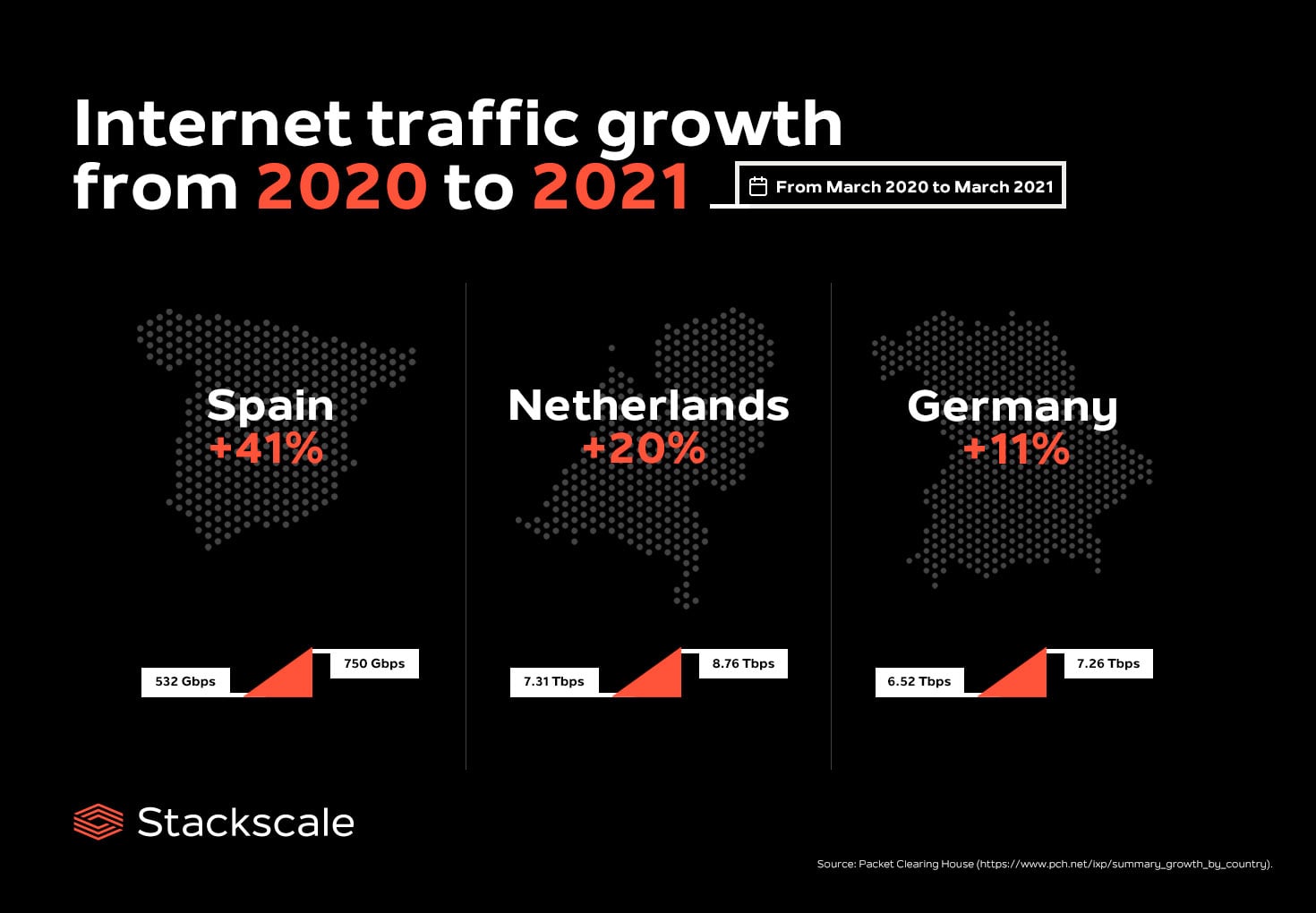Internet traffic has increased worldwide during the last year due to the increase of many digital activities — from remote working and education to video streaming and video calls. The lockdowns and restrictions provoked by the Covid-19 pandemic have accelerated the digital economy and, as a result, Internet traffic growth.
Many companies have been forced to accelerate their digital transformation. The use of secure connections via VPNs has gone through the roof. eCommerce has grown considerably as consumers have changed their purchasing habits. Demand for cloud services and connectivity has rocketed with workers and students going remote. This growth in Internet traffic is reflected on the traffic graphs of IXPs around the world.
Internet traffic growth in ESpanix
Spain’s Internet Exchange Point, ESpanix, has doubled its Internet traffic from about 350 Gbps in March 2020 to about 700 Gbps in March 2021; as shown in the following graph.
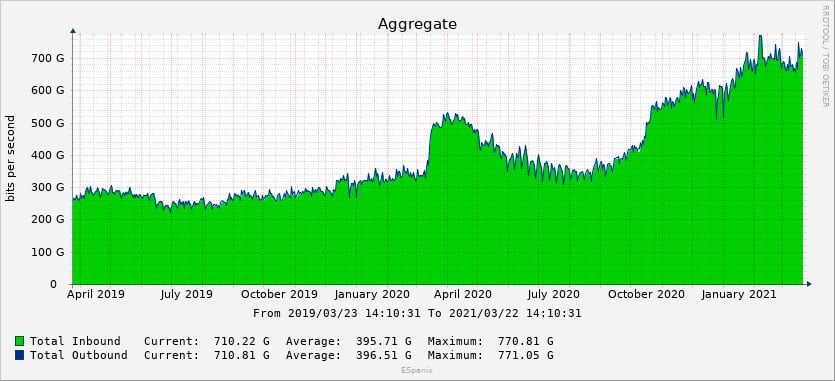
Internet traffic growth in AMS-IX
AMS-IX has increased its Internet traffic from about 5 Tbps in March 2020 to about 7 Tbps in March 2021; as shown in the following graph.
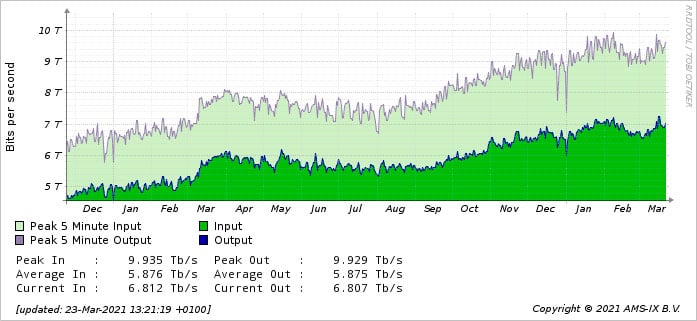
Internet traffic growth in DE-CIX Frankfurt
DE-CIX Frankfurt has increased its Internet traffic from about 6 Tbps in March 2020 to about 7 Tbps in March 2021; as shown in the following graph.
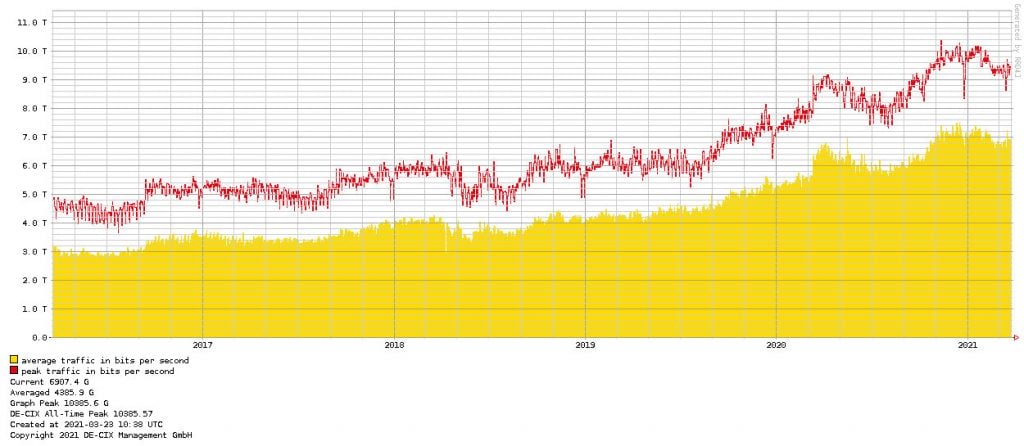
Internet traffic growth in DE-CIX Madrid
DE-CIX Madrid has increased its Internet traffic from about 350 Gbps in March 2020 to about 600 Gbps in March 2021; as shown in the following graph.
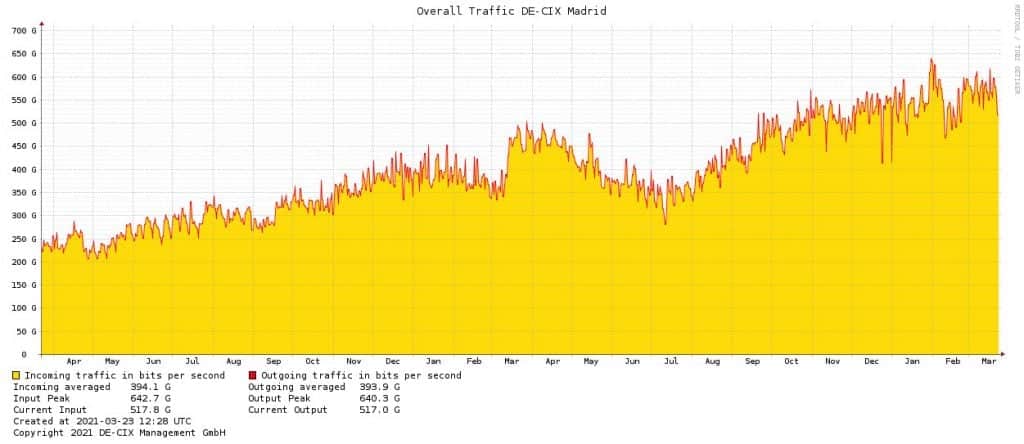
Growth in Internet traffic within the European Union
In general, Internet traffic has grown within all the European Union, according to data from the Internet exchange point directory report by Packet Clearing House. Among the countries that have experienced a larger growth, there are the Netherlands, Italy, Spain and Luxembourg. Here are some examples, according to PCH data, of how Internet traffic has increased in the EU:
| Country | March 2020 | March 2021 |
| Netherlands | 7.31 Tbps | 8.76 Tbps |
| Germany | 6.52 Tbps | 7.26 Tbps |
| France | 1.54 Tbps | 2.05 Tbps |
| Italy | 627 Gbps | 852 Gbps |
| Spain | 532 Gbps | 750 Gbps |
| Bulgaria | 545 Gbps | 655 Gbps |
| Austria | 485 Gbps | 624 Gbps |
| Luxembourg | 46.7 Gbps | 158 Gbps |
| Lithuania | 55 Gbps | 102 Gbps |
| Latvia | 3.56 Gbps | 8.9 Gbps |
Growth in global Internet traffic
As for the rest of the world, Egypt, Zimbabwe, Chile and Bolivia are among the countries that have experienced the largest growth. The following table shows some of the countries where Internet traffic has increased the most, according to PCH data:
| Country | March 2020 | March 2021 |
| India | 372 Gbps | 945 Gbps |
| Chile | 105 Gbps | 671 Gbps |
| South Korea | 70 Gbps | 227 Gbps |
| Luxembourg | 46.7 Gbps | 158 Gbps |
| Nigeria | 42.1 Gbps | 120 Gbps |
| Turkey | 31.4 Gbps | 88.5 Gbps |
| Peru | 16 Gbps | 39 Gbps |
| Argentina | 7.63 Gbps | 19.5 Gbps |
| Cambodia | 4 Gbps | 10 Gbps |
| Paraguay | 2.4 Gbps | 5.5 Gbps |
| Bhutan | 1.13 Gbps | 5.2 Gbps |
| Bolivia | 619 Mbps | 2.1 Gbps |
| Botswana | 364 Mbps | 1 Gbps |
| Egypt | 15 Kbps | 1.8 Gbps |
| Zimbabwe | 37.3 Mbps | 240 Mbps |
Find more about the role of Internet Exchange Points in making interconnection easier and more efficient.
Growth in Internet traffic from 2020 to 2021 (infographics)
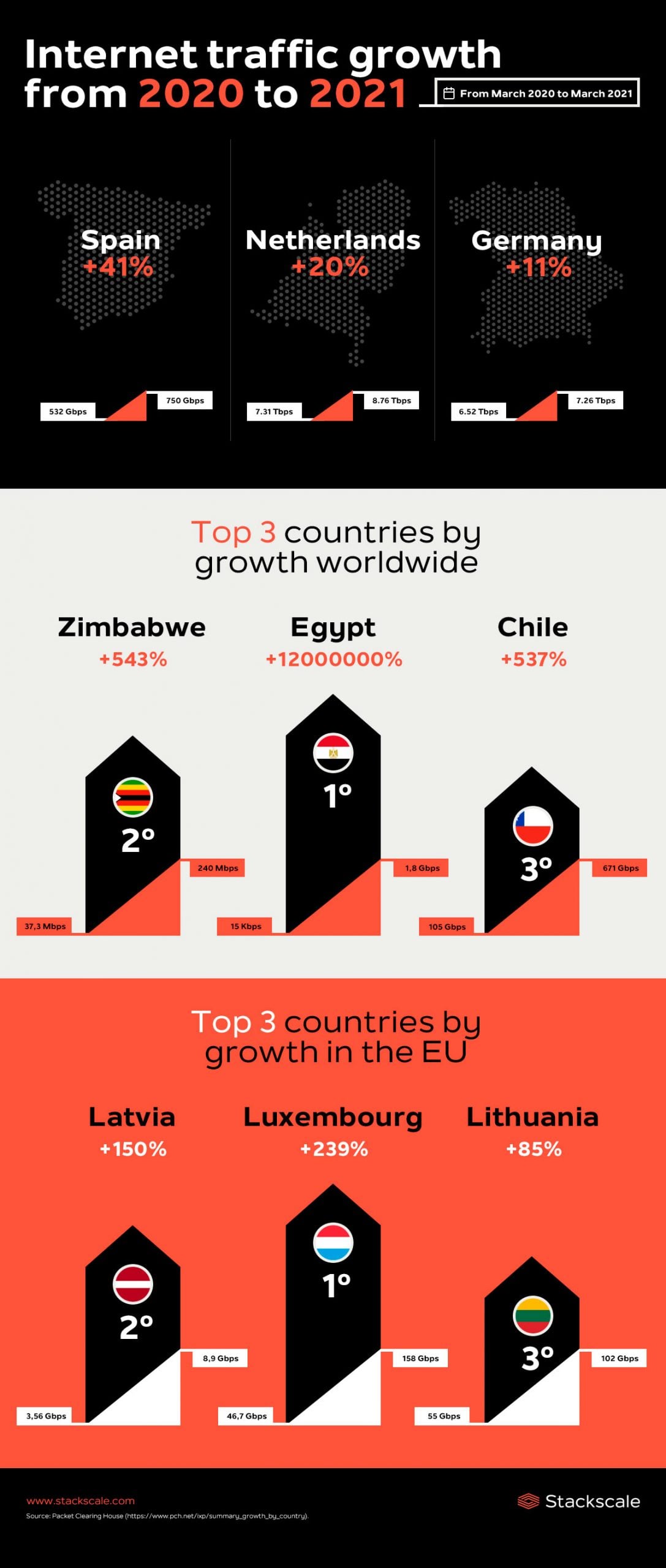
Sources: PCH.

